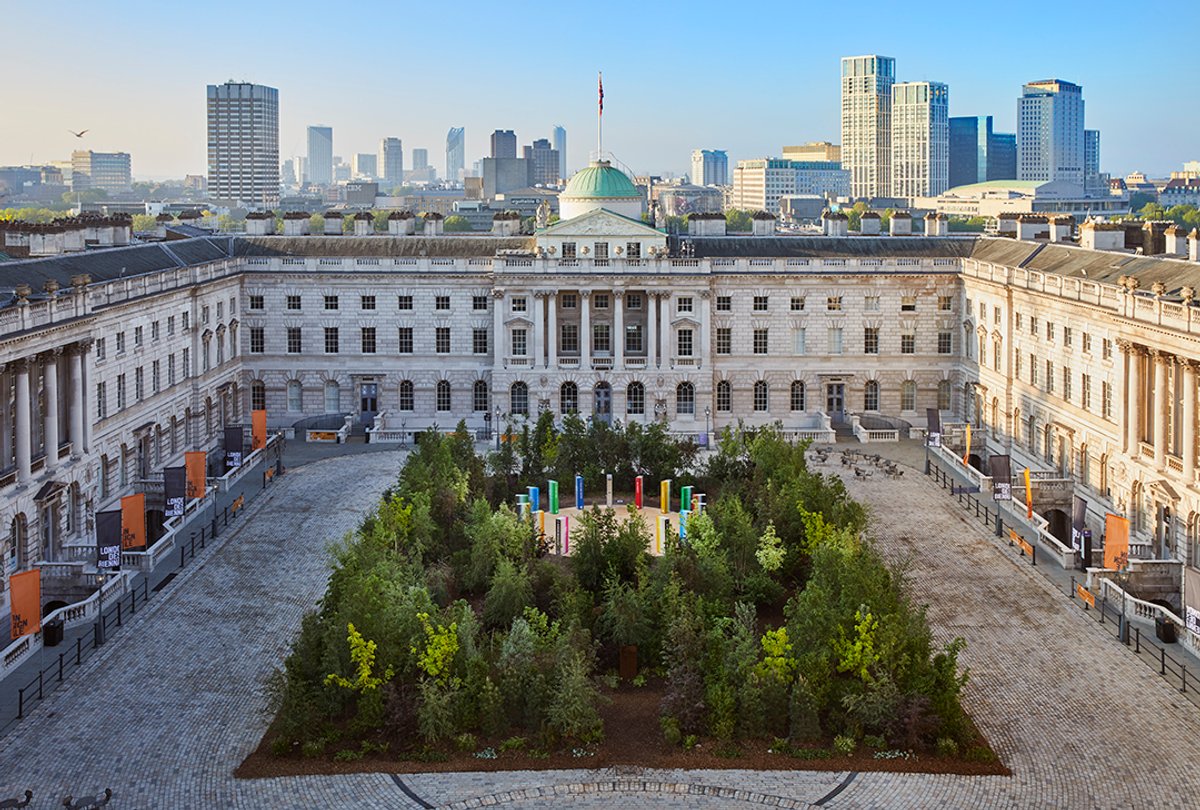The British artist and designer Es Devlin told a preview audience this morning that she was forbidden from planting a forest in the courtyard of Somerset House in London. But she did it anyway. The result is Forest for Change (Global Goals Pavilion), a covering of 400 trees of 27 different species that forms the centrepiece of this year’s London Design Biennale (1-27 June). Devlin was shown around the historic site in 2019 by its director Jonathan Reekie. “He said the one thing you can’t do is plant trees. It’s written into the architectural covenant of the building,” she told the assembled crowd. This edition of the biennial aims to drive awareness of the United Nation’s Global Goals for Sustainable Development, a point stressed by the screenwriter and activist Richard Curtis who said that the carpet of trees in the courtyard is “the most beautiful thing I’ve ever been involved in making”. The trees were all sourced from nurseries in Berkshire; once the biennale ends, the shrubs will be planted at a children’s hospice in Essex. “We need this,” says Devlin, the artistic director of this year’s biennale, referring to the restorative power of foliage during a pandemic. Many of the 38 national pavilions at the biennale focus on the climate crisis along with other issues such as immigration in the post-pandemic world. Devlin’s Forest of Us, a mirrored environment in which visitors traverse a maze that resembles the human respiratory system, was recently unveiled at the experiential art centre Superblue in Miami’s Allapattah neighbourhood.
Diaryblog
Taking root—Es Devlin’s urban forest unveiled at Somerset House
1 June 2021

Forest for Change, The Global Goals Pavilion, Es Devlin Ed Reeve


